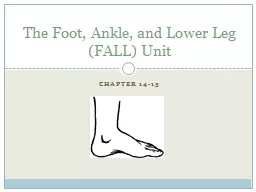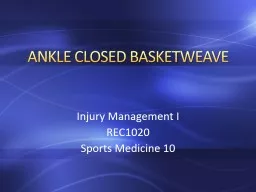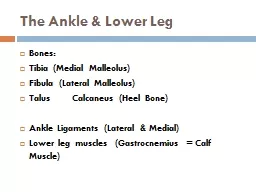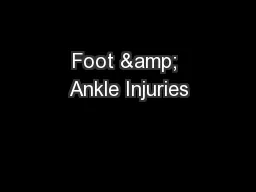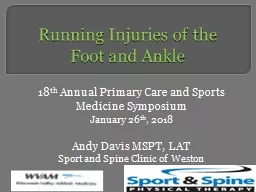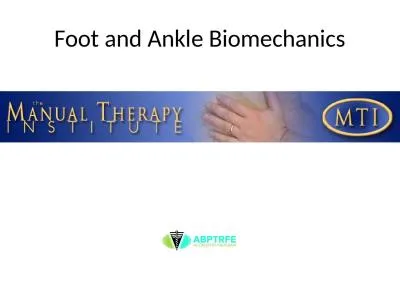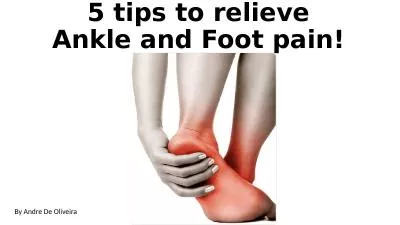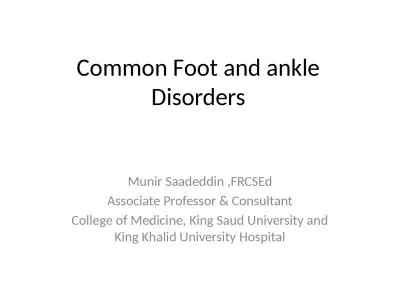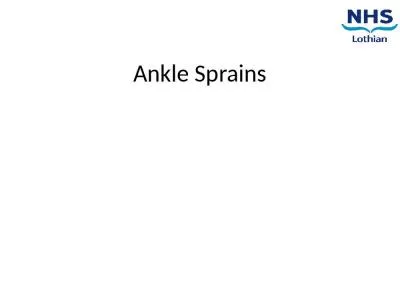PPT-Chapter 14-15 The Foot, Ankle, and Lower Leg (FALL) Unit
Author : hadley | Published Date : 2022-02-24
The foot has stresses that exceed the demands placed on any other area of the body The foot stabilizes and supports the rest of the body while standing walking running
Presentation Embed Code
Download Presentation
Download Presentation The PPT/PDF document "Chapter 14-15 The Foot, Ankle, and Lower..." is the property of its rightful owner. Permission is granted to download and print the materials on this website for personal, non-commercial use only, and to display it on your personal computer provided you do not modify the materials and that you retain all copyright notices contained in the materials. By downloading content from our website, you accept the terms of this agreement.
Chapter 14-15 The Foot, Ankle, and Lower Leg (FALL) Unit: Transcript
Download Rules Of Document
"Chapter 14-15 The Foot, Ankle, and Lower Leg (FALL) Unit"The content belongs to its owner. You may download and print it for personal use, without modification, and keep all copyright notices. By downloading, you agree to these terms.
Related Documents

